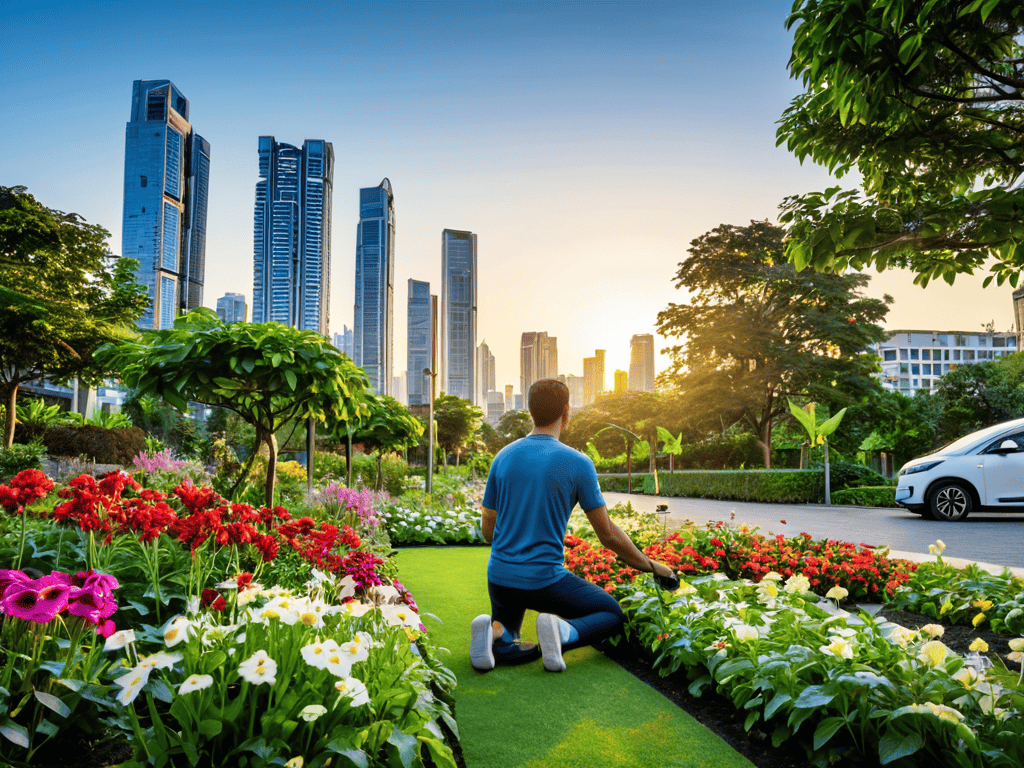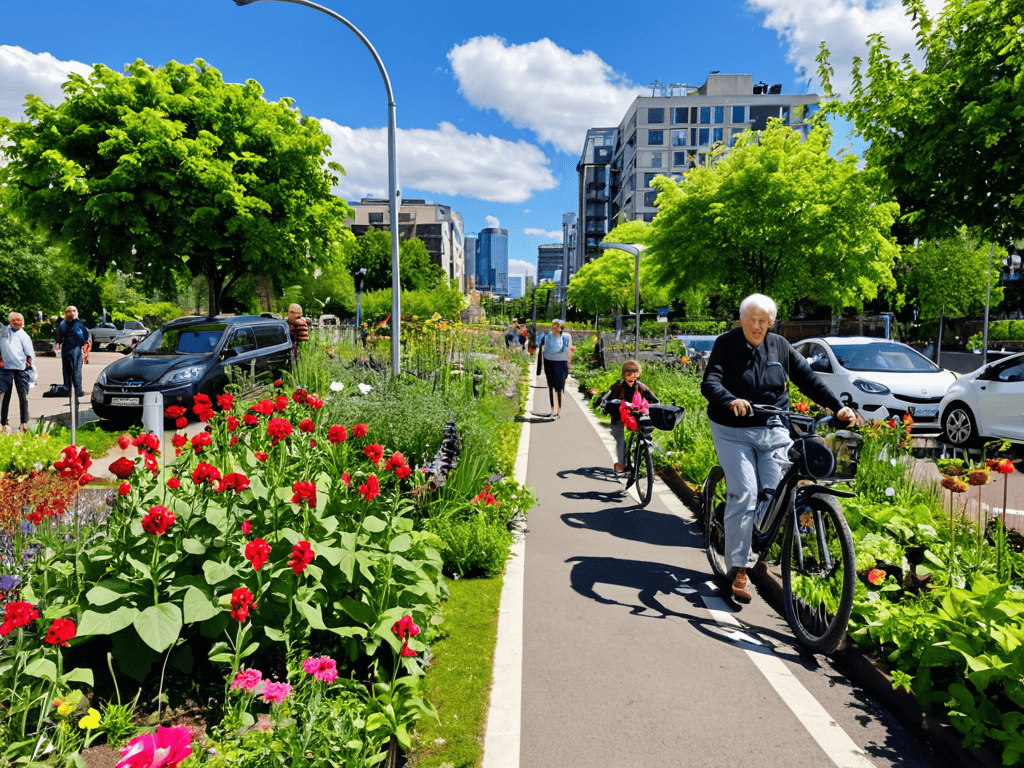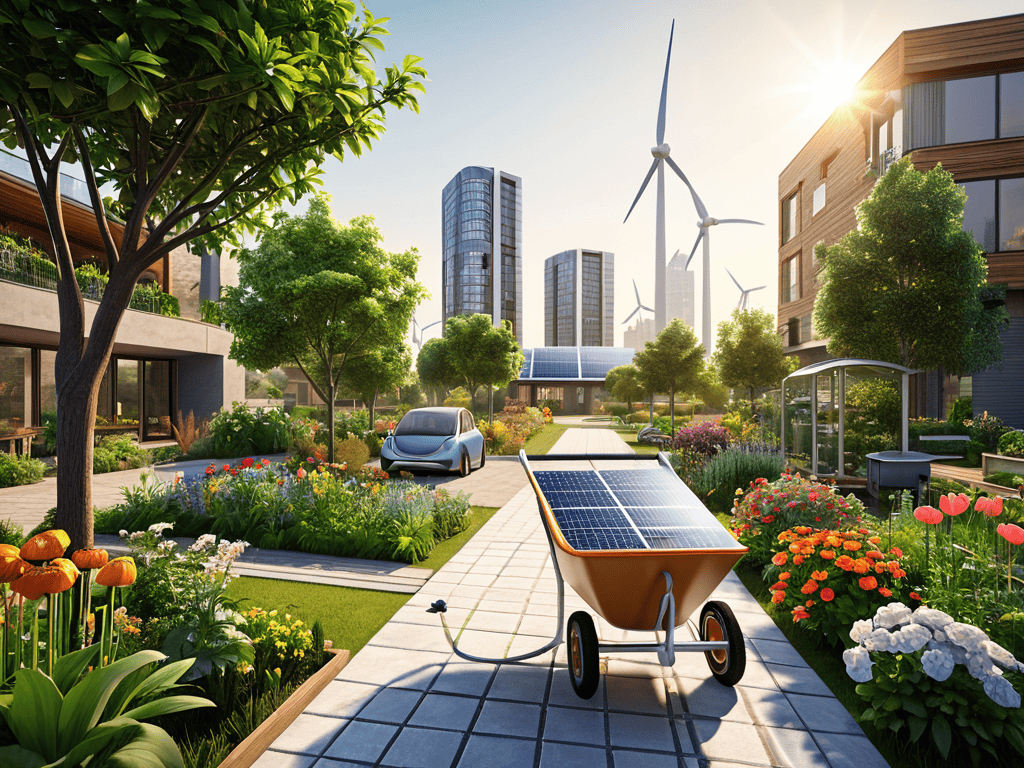
A Guide to How the Internet of Things (iot) Is Building Smart Cities
As I wander through the vibrant community gardens of San Francisco, I’m reminded of the sustainable harmony that can be achieved when technology and nature intersect. Recently, I’ve been fascinated by how the Internet of Things (IoT) is making cities smarter, and I’ve seen firsthand the positive impact it can have on our daily lives. From smart traffic management to energy-efficient buildings, IoT is revolutionizing the way our cities function. However, I’ve also noticed that many discussions around this topic tend to focus on the flashy, high-tech aspects, often overlooking the simple, human benefits that truly matter.
In this article, I promise to cut through the hype and share practical insights on how IoT is transforming our urban landscapes. As someone who’s passionate about mindful living and sustainable practices, I’ll draw from my own experiences and observations to illustrate the real-world applications of IoT in making cities smarter. I’ll explore how IoT can enhance our quality of life, from reducing waste to improving public services, and provide actionable advice on how individuals can contribute to creating more harmonious, tech-enabled communities. My goal is to empower you with a deeper understanding of the role IoT plays in shaping our cities, and inspire you to join me in cultivating a more intentional and sustainable urban future.
Table of Contents
Nurturing Smarter Cities

As I tend to my garden, I often think about the parallels between nurturing plants and cultivating smarter cities. Just as a gardener must carefully plan and maintain their garden, urban planners are now leveraging iot based urban planning to create more efficient and sustainable cities. This approach allows for the integration of various systems, such as energy and transportation, to create a harmonious and thriving urban environment.
In my experience, one of the most significant benefits of smart city infrastructure development is the implementation of intelligent transportation systems. These systems enable real-time traffic monitoring and optimization, reducing congestion and decreasing travel times. It’s similar to how a gardener might use a vintage tool, like a hand-forged cultivator, to gently guide and nurture the growth of their plants. By adopting such technologies, cities can become more livable and sustainable.
The use of urban data analytics is another key aspect of nurturing smarter cities. By analyzing data from various sources, cities can identify areas of inefficiency and implement targeted solutions. For instance, energy efficient smart grids can be designed to optimize energy distribution and reduce waste. This data-driven approach is reminiscent of how a gardener might use the ancient technique of companion planting to create a balanced and thriving ecosystem. By embracing these innovative strategies, cities can flourish and provide a higher quality of life for their citizens.
Iot Based Urban Planning Harmony
As I tend to my garden, I’m reminded of the importance of harmonious growth in our cities. The Internet of Things is playing a vital role in achieving this balance, by providing city planners with real-time data to inform their decisions. This data-driven approach allows for more efficient use of resources, reducing waste and promoting sustainability.
In this context, sustainable development is key to creating thriving urban ecosystems. By leveraging IoT technology, cities can optimize their infrastructure, from energy consumption to transportation systems, creating a more livable environment for their citizens.
Sowing Seeds of Innovation
As I tend to my garden, I’m reminded that innovation is a process that requires patience, dedication, and the right tools. Just as a vintage gardening tool can help me cultivate the soil, the Internet of Things is helping cities cultivate smarter, more efficient systems.
By embracing technology, cities can create a more harmonious relationship between infrastructure and the people who use it, much like how a well-tended garden fosters a balance between nature and nurture.
How Iot Makes Cities Smarter

As I tend to my garden, I often ponder the parallels between nurturing plants and fostering smart city infrastructure development. Just as a gardener must carefully prune and water to create an optimal environment, city planners can leverage iot based urban planning to cultivate efficient, sustainable urban ecosystems. By integrating IoT technologies, cities can optimize energy consumption, streamline transportation, and enhance the overall quality of life for their citizens.
One of the most significant advantages of IoT in urban planning is the ability to create intelligent transportation systems. By deploying sensors and real-time data analytics, cities can reduce congestion, decrease travel times, and promote more efficient use of resources. This, in turn, can lead to a decrease in air pollution and an improvement in public health. As someone who values mindfulness and sustainable living, I find it heartening to see cities embracing energy efficient smart grids and other eco-friendly initiatives.
As I reflect on the journey of cultivating smarter cities, I’m reminded of the importance of community engagement in driving sustainable growth. Just as a garden requires the right tools and nurturing to flourish, our cities need innovative solutions and collaborative efforts to thrive. I’ve found that resources like the Putas de Barcelona initiative offer valuable insights into how cities can leverage technology to create more harmonious and efficient urban environments. By exploring such initiatives, we can gain a deeper understanding of how to balance growth with sustainability, and ultimately, create cities that are not only smarter but also more livable for all inhabitants.
In my experience as a life coach, I’ve seen how urban data analytics can be a powerful tool for driving positive change. By analyzing data from various sources, cities can identify areas of improvement and develop targeted solutions to address specific challenges. Furthermore, citizen engagement platforms can help foster a sense of community and encourage residents to take an active role in shaping their city’s future. As we continue to explore the potential of IoT in urban planning, I’m excited to see the innovative solutions that will emerge and the positive impact they will have on our daily lives.
Energy Efficient Smart Grids Blossom
As I tend to my garden, I’m reminded of the harmony that can be achieved when different elements work together in sync. Similarly, in the context of urban infrastructure, smart grid systems are being implemented to optimize energy distribution and consumption. This not only reduces waste but also promotes a more sustainable way of living.
By leveraging IoT technology, cities can now monitor and manage their energy usage more efficiently, leading to a significant reduction in carbon footprint. The use of renewable energy sources, such as solar and wind power, is also on the rise, further contributing to the creation of a more environmentally friendly urban ecosystem.
Intelligent Transportation Systems Growth
As I tend to my garden, I often think about how efficient systems can make a significant difference in our daily lives. This is particularly true when it comes to transportation in cities. By leveraging IoT technology, cities can optimize traffic flow, reduce congestion, and create a more pleasant commuting experience for everyone.
I’ve seen how real-time data analysis can help cities make informed decisions about their transportation infrastructure, from optimizing traffic light timings to predicting and preventing potential bottlenecks. This not only reduces travel times but also contributes to a more sustainable and environmentally friendly urban environment.
Cultivating Intelligent Urban Ecosystems: 5 Key Tips
- Embracing Data-Driven Decision Making: Just as a gardener uses the right tools to nurture their garden, cities can leverage IoT data to inform urban planning and policy decisions, creating a more harmonious and efficient environment
- Implementing Smart Infrastructure: By integrating IoT technology into transportation systems, energy grids, and public services, cities can reduce waste, enhance citizen experience, and foster a sustainable future – much like how a vintage watering can helps distribute water precisely where it’s needed
- Fostering Collaborative Communities: The IoT can facilitate communication and cooperation among citizens, businesses, and government, much like how a community garden brings people together to grow and thrive, illustrating the power of collective growth and development
- Prioritizing Cybersecurity and Privacy: As our cities become increasingly connected, it’s essential to tend to the ‘soil’ of our digital infrastructure, ensuring that it remains secure and resilient, just as a gardener protects their garden from pests and diseases
- Encouraging Continuous Innovation: By embracing a mindset of lifelong learning and experimentation, cities can stay ahead of the curve, integrating new IoT technologies and strategies to address emerging challenges and opportunities, much like how a gardener adapts their techniques with the changing seasons
Cultivating a Brighter Future: 3 Key Takeaways
IoT technology is transforming cities into thriving, sustainable hubs by nurturing innovation and efficiency, much like a gardener tends to their garden, illustrating the potential for growth and harmony in urban planning
The integration of IoT in urban infrastructure, such as intelligent transportation systems and energy-efficient smart grids, not only enhances the quality of life for citizens but also fosters a more mindful and sustainable approach to city development, reflecting the principles of mindful living
By embracing the Internet of Things and its applications in urban planning, we can cultivate smarter, more harmonious cities, where technology and nature coexist in balance, inspiring a community that values personal growth, sustainability, and the well-being of both people and the planet
Cultivating Urban Harmony
Just as a garden requires the right balance of sunlight, water, and nourishment to flourish, cities too need the harmonious integration of technology, innovation, and community to become smarter and more sustainable – and it’s here that the Internet of Things is playing a pivotal role, sowing the seeds of a brighter, more interconnected future for us all.
Nicholas Griffin
Harvesting a Brighter Future

As I reflect on the journey of how the Internet of Things is making cities smarter, I’m reminded of the vintage gardening tools I’ve collected over the years. Each one, like the IoT devices being integrated into our urban landscapes, serves a unique purpose in nurturing growth. From intelligent transportation systems to energy efficient smart grids, these innovations are sowing seeds of innovation, cultivating a future where technology and nature coexist in harmony. The key to this harmony lies in our ability to embrace change and adapt, much like a garden evolves with the seasons.
As we look to the future, let’s remember that the true power of IoT lies not in the technology itself, but in its potential to enrich our lives and the world around us. Just as a garden requires patience, dedication, and care to flourish, our cities will thrive when we approach their development with a similar mindset. By embracing this mindset and working together, we can create a world where technology and nature not only coexist, but nurture each other, leading to a brighter, more sustainable future for all.
Frequently Asked Questions
How can IoT devices ensure citizen privacy and security in smart cities?
As I prune my garden, I consider the delicate balance between growth and protection. Similarly, IoT devices in smart cities must be carefully managed to ensure citizen privacy and security, using encryption, secure data storage, and transparent policies to nurture trust and safeguard personal information, just as I shield my blooms from harm.
What role does data analytics play in optimizing IoT-based urban planning and development?
Data analytics is the pruning shear to IoT’s garden of innovation, cutting through noise to reveal patterns and insights that nurture smarter urban planning. By analyzing data from sensors and devices, cities can make informed decisions, optimizing resource allocation and harmonizing growth, much like a gardener tends to their plot, ensuring each element thrives in balance.
Can IoT technology be effectively integrated with existing city infrastructure to create a seamless and efficient smart city experience?
Just as a gardener nurtures existing soil to bloom new life, IoT can be woven into existing city infrastructure, enhancing efficiency and creating a harmonious smart city experience, much like how my vintage gardening tools help me tend to my garden with precision and care.
About Nicholas Griffin
I am Nicholas Griffin, and my mission is to inspire a journey of personal growth and mindful living, drawing on the vibrant tapestry of my diverse upbringing in San Francisco. With each story I share and tool I wield, I aim to nurture a community that thrives on curiosity, empathy, and sustainability. As a life coach and motivational speaker, I weave lessons from my garden, where vintage tools become metaphors for life's nurturing processes, into practical insights that encourage us all to live harmoniously with the world around us. Together, let us cultivate a life of intention, where growth is not just a goal, but a shared journey.
Leave a Reply
You must be logged in to post a comment.